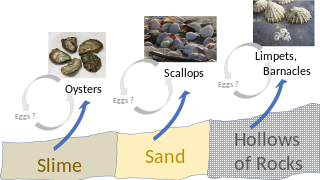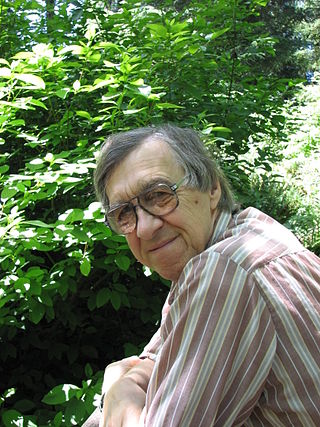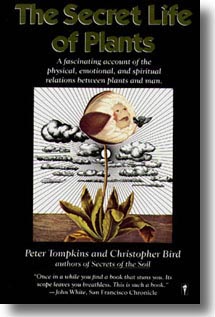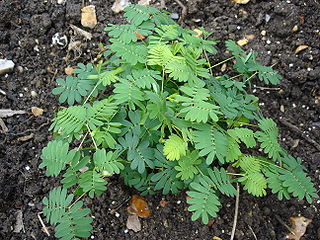
Clairvoyance is the claimed ability to acquire information that would be considered impossible to get through scientifically proven sensations, thus classified as extrasensory perception, or "sixth sense". Any person who is claimed to have such ability is said to be a clairvoyant.
Extrasensory perception (ESP), also known as a sixth sense, or cryptaesthesia, is a claimed paranormal ability pertaining to reception of information not gained through the recognized physical senses, but sensed with the mind. The term was adopted by Duke University botanist J. B. Rhine to denote psychic abilities such as intuition, telepathy, psychometry, clairvoyance, clairaudience, clairsentience, empathy and their trans-temporal operation as precognition or retrocognition.

Parapsychology is the study of alleged psychic phenomena and other paranormal claims, for example, those related to near-death experiences, synchronicity, apparitional experiences, etc. Criticized as being a pseudoscience, the majority of mainstream scientists reject it. Parapsychology has also been criticized by mainstream critics for claims by many of its practitioners that their studies are plausible despite a lack of convincing evidence after more than a century of research for the existence of any psychic phenomena.

Spontaneous generation is a superseded scientific theory that held that living creatures could arise from nonliving matter and that such processes were commonplace and regular. It was hypothesized that certain forms, such as fleas, could arise from inanimate matter such as dust, or that maggots could arise from dead flesh. The doctrine of spontaneous generation was coherently synthesized by the Greek philosopher and naturalist Aristotle, who compiled and expanded the work of earlier natural philosophers and the various ancient explanations for the appearance of organisms. Spontaneous generation was taken as scientific fact for two millennia. Though challenged in the 17th and 18th centuries by the experiments of the Italian biologists Francesco Redi and Lazzaro Spallanzani, it was not discredited until the work of the French chemist Louis Pasteur and the Irish physicist John Tyndall in the mid-19th century.
Paranormal events are purported phenomena described in popular culture, folk, and other non-scientific bodies of knowledge, whose existence within these contexts is described as being beyond the scope of normal scientific understanding. Notable paranormal beliefs include those that pertain to extrasensory perception, spiritualism and the pseudosciences of ghost hunting, cryptozoology, and ufology.

Sir Jagadish Chandra Bose (; IPA:[dʒɔɡodiʃtʃɔndroboʃu]; 30 November 1858 – 23 November 1937) was a polymath with interests in biology, physics, botany and writing science fiction. He was a pioneer in the investigation of radio microwave optics, made significant contributions to botany, and was a major force behind the expansion of experimental science on the Indian subcontinent. Bose is considered the father of Bengali science fiction. A crater on the Moon was named in his honour. He founded the Bose Institute, a premier research institute in India and also one of its oldest. Established in 1917, the institute was the first interdisciplinary research centre in Asia. He served as the Director of Bose Institute from its inception until his death.

Artemia is a genus of aquatic crustaceans also known as brine shrimp or sea monkeys. It is the only genus in the family Artemiidae. The first historical record of the existence of Artemia dates back to the first half of the 10th century AD from Lake Urmia, Iran, with an example called by an Iranian geographer an "aquatic dog", although the first unambiguous record is the report and drawings made by Schlösser in 1757 of animals from Lymington, England. Artemia populations are found worldwide, typically in inland saltwater lakes, but occasionally in oceans. Artemia are able to avoid cohabiting with most types of predators, such as fish, by their ability to live in waters of very high salinity.

Charles T. Tart is an American psychologist and parapsychologist known for his psychological work on the nature of consciousness, as one of the founders of the field of transpersonal psychology, and for his research in parapsychology.

The Secret Life of Plants (1973) is a book by Peter Tompkins and Christopher Bird. The book documents controversial experiments that claim to reveal unusual phenomena associated with plants, such as plant sentience and the ability of plants to communicate with other creatures, including humans. The book goes on to discuss philosophies and progressive farming methods based on these findings. It was heavily criticized by scientists for promoting pseudoscientific claims. Later editions were published with the subtitle A Fascinating Account of the Physical, Emotional and Spiritual Relations Between Plants and Man.

Grover Cleveland "Cleve" Backster Jr. was an interrogation specialist for the Central Intelligence Agency (CIA), best known for his experiments with plants using a polygraph instrument in the 1960s which led to his theory of primary perception where he claimed that plants feel pain and have extrasensory perception (ESP), which was widely reported in the media. These claims have been rejected by the scientific community.

Plant perception is the ability of plants to sense and respond to the environment by adjusting their morphology and physiology. Botanical research has revealed that plants are capable of reacting to a broad range of stimuli, including chemicals, gravity, light, moisture, infections, temperature, oxygen and carbon dioxide concentrations, parasite infestation, disease, physical disruption, sound, and touch. The scientific study of plant perception is informed by numerous disciplines, such as plant physiology, ecology, and molecular biology.
In the study of the biological sciences, biocommunication is any specific type of communication within (intraspecific) or between (interspecific) species of plants, animals, fungi, protozoa and microorganisms. Communication means sign-mediated interactions following three levels of rules. Signs in most cases are chemical molecules (semiochemicals), but also tactile, or as in animals also visual and auditive. Biocommunication of animals may include vocalizations, or pheromone production, chemical signals between plants and animals, and chemically mediated communication between plants and within plants.
A sense is a biological system used by an organism for sensation, the process of gathering information about the surroundings through the detection of stimuli. Although, in some cultures, five human senses were traditionally identified as such, many more are now recognized. Senses used by non-human organisms are even greater in variety and number. During sensation, sense organs collect various stimuli for transduction, meaning transformation into a form that can be understood by the brain. Sensation and perception are fundamental to nearly every aspect of an organism's cognition, behavior and thought.
The karmic process in Jainism is based on seven truths or fundamental principles (tattva) of Jainism which explain the human predicament. Out of those, four—influx (āsrava), bondage (bandha), stoppage (saṃvara) and release (nirjarā)—pertain to the karmic process. Karma gets bound to the soul on account of two processes:
Feature detection is a process by which the nervous system sorts or filters complex natural stimuli in order to extract behaviorally relevant cues that have a high probability of being associated with important objects or organisms in their environment, as opposed to irrelevant background or noise.
Emotional lateralization is the asymmetrical representation of emotional control and processing in the brain. There is evidence for the lateralization of other brain functions as well.

Pain in invertebrates is a contentious issue. Although there are numerous definitions of pain, almost all involve two key components. First, nociception is required. This is the ability to detect noxious stimuli which evokes a reflex response that moves the entire animal, or the affected part of its body, away from the source of the stimulus. The concept of nociception does not necessarily imply any adverse, subjective feeling; it is a reflex action. The second component is the experience of "pain" itself, or suffering—i.e., the internal, emotional interpretation of the nociceptive experience. Pain is therefore a private, emotional experience. Pain cannot be directly measured in other animals, including other humans; responses to putatively painful stimuli can be measured, but not the experience itself. To address this problem when assessing the capacity of other species to experience pain, argument-by-analogy is used. This is based on the principle that if a non-human animal's responses to stimuli are similar to those of humans, it is likely to have had an analogous experience. It has been argued that if a pin is stuck in a chimpanzee's finger and they rapidly withdraw their hand, then argument-by-analogy implies that like humans, they felt pain. It has been questioned why the inference does not then follow that a cockroach experiences pain when it writhes after being stuck with a pin. This argument-by-analogy approach to the concept of pain in invertebrates has been followed by others.
In plant biology, plant memory describes the ability of a plant to retain information from experienced stimuli and respond at a later time. For example, some plants have been observed to raise their leaves synchronously with the rising of the sun. Other plants produce new leaves in the spring after overwintering. Many experiments have been conducted into a plant's capacity for memory, including sensory, short-term, and long-term. The most basic learning and memory functions in animals have been observed in some plant species, and it has been proposed that the development of these basic memory mechanisms may have developed in an early organismal ancestor.

“The Nervous Mechanism of Plants”, published in 1926, is a botany book by Sir Jagadish Chandra Bose which summarises his most recent findings in the area of plant physiology. Bose had previously investigated this topic in books such as Plant response as a means of physiological investigation from 1906, or The physiology of photosynthesis, published in 1924. In this book, he proposes that the response mechanisms of plants to stimuli are physiologically similar to those in animals.
Gail Burwen was an American illustrator best known for her work in underground comix and the science fiction genre of the 1970s. She illustrated the original cover of the controversial plant perception book The Secret Life of Plants published in 1973.











